10 Search Remarketing Vs Display Remarketing Differences or Which is better
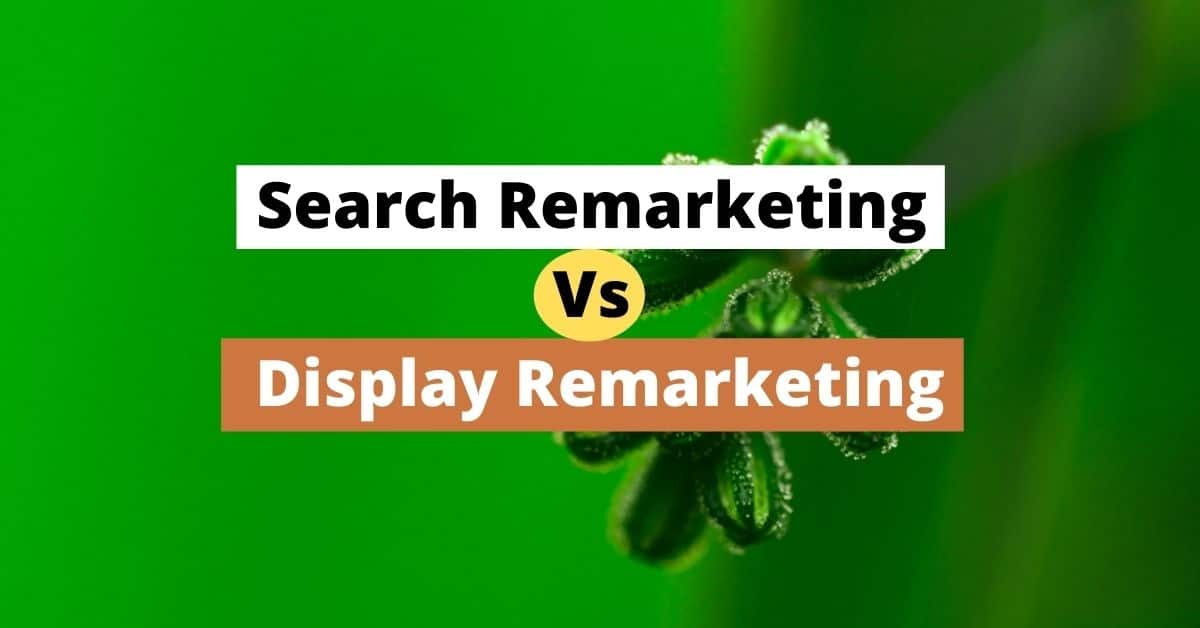
So, you have heard about remarketing and its importance to your business.
But, when you dig a little further, you found out that there are ways of remarketing in both Google search and display networks.
Although they might look similar, they have a big difference in how they work and how they affect your marketing campaigns.
In this article, we are going to discuss Search remarketing vs Display remarketing differences, their pros and cons, and in which situation one can be better to maximize your campaign’s performance.
So, without further ado let’s get started…
A brief overview for both
Display remarketing – mostly referred to as just standard remarketing or traditional remarketing is retargeting the past visitors of your website by showing them your ads across the Display network.
It is one of the earliest remarketing methods created by Google ads and it is more used by marketers compared to search remarketing.
Search remarketing – also known as Remarketing list for search ads (RLSA) is used to show your ads to past visitors of your website when they do follow up searches on the Search network using the keywords that you are targeting after they leave your website.
It is a younger brother of display remarketing and one of the most underutilized tools inside Google ads right now.
Similarities
Their similarities come when setting them up.
They both require remarketing tag to be added to every page of your site. The remarketing tag then places a cookie in the visitor’s browser and adds every visitor to your remarketing list to be able to retarget them whenever needed in the future.
1. In what forms they come
The first difference between them is like comparing the Search and Display ads.
RLSA comes in the text format at the top of the search engine results page (SERP).
It comes in the same shape and looks like the standard search ads.
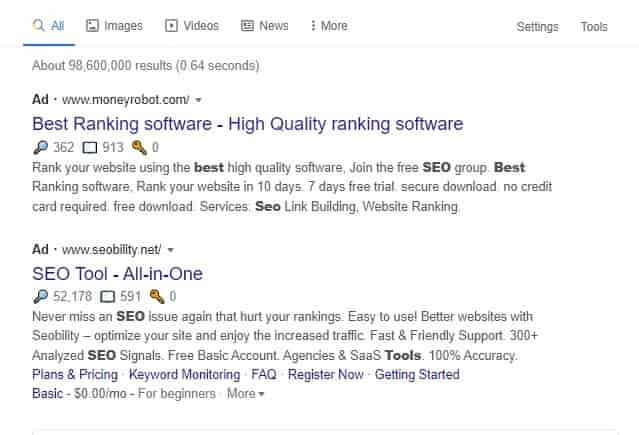
Display remarketing campaigns, on the other hand, won’t be seen on the SERP.
The ads are shown to your visitors on other websites, mobile apps, or Google products like Gmail.
They mostly come in image formats. To create an ad, you need to create at least 1 square and 1 landscape images (1.91:1 and 1:1 ratios).
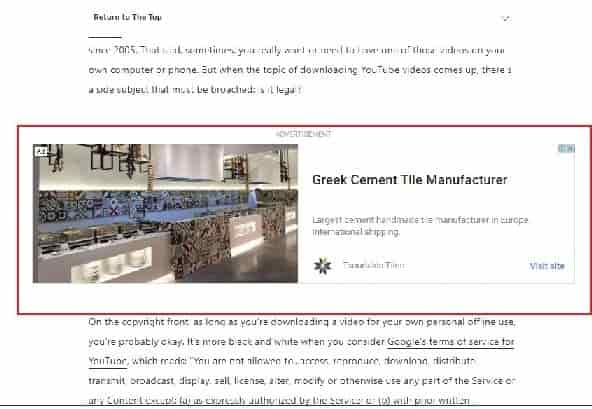
You can easily create images and logos for your display remarketing campaigns by uploading your own images or using the Shutterstock images for free.
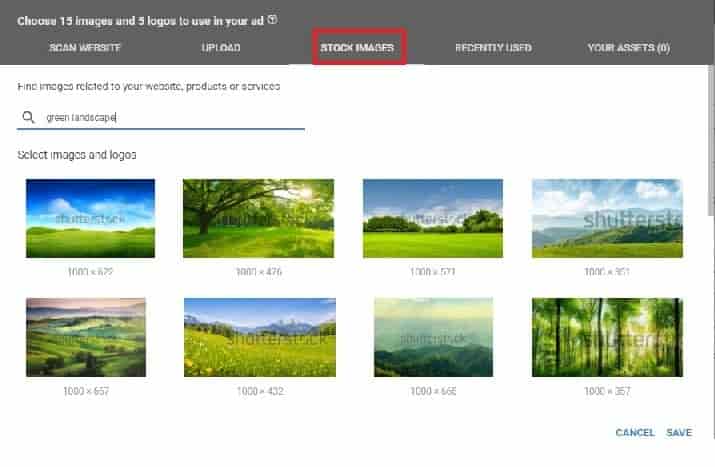
2. Meeting user intent
When it comes to meeting the user intent, both of the remarketing methods are quite different from one another.
Remarketing list for search ads can immediately show up on the search results page whenever someone from your remarketing list makes a search query.
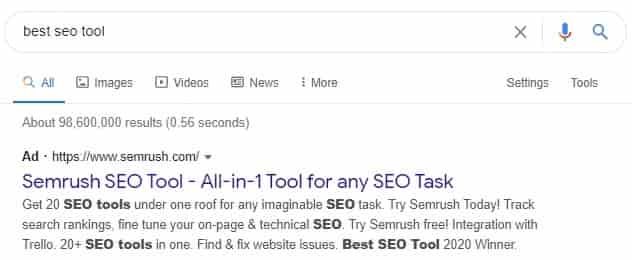
So, it means your ads can meet the demand instantly (if the visitor likes your product, of course) by showing up at the right time.
Display remarketing, however, cannot meet the immediate demand of your previous visitors.
Instead, it displays your ads across different platforms by constantly reminding people about your brand.
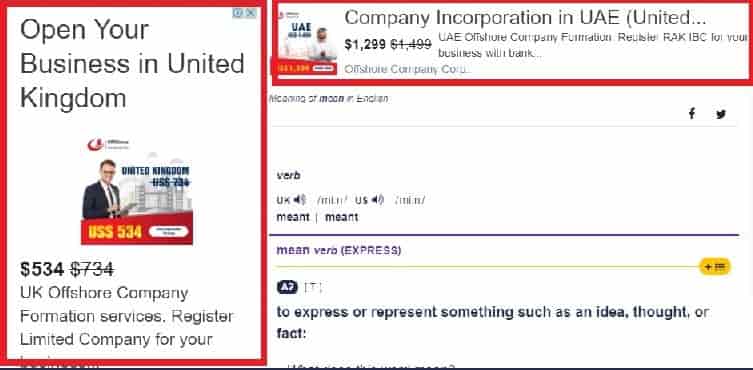
The people might have interested in your brand in the past or maybe still interested, but, when your ad shows up when they are browsing the news feed or playing games, it might not be the right time for them to take an action.
So, RLSA can reach people who are actively searching for your products/services with high intent.
And Display remarketing can reach people who might be interested in your products/services with a low intent to purchase.
3. How are they charged?
Depending on your goals from running remarketing campaigns, you can focus on clicks, impressions, or conversions.
Because RLSA campaigns are shown on the SERP, they focus on clicks. Therefore, they are charged on a CPC (cost-per-click) basis. You are going to pay when someone clicks your ad. If someone sees your ad but doesn’t click, you won’t be charged.
With Display remarketing campaigns, you can be charged in one of three ways.
- Cost per click (CPC) – same as RLSA. You are going to pay on a CPC basis.
- Cost per impression (CPM) – paying for per 1000 impressions. Use this method if you want to focus on visibility. This method can be cheaper than other methods.
- Cost per action (CPA) – the cost of every converted customer. Use this if you want to optimize your campaigns for conversions. But, this can be more expensive than other methods, because it is the final cost of all the successful and unsuccessful ad interactions to get 1 conversion.
4. Cost of Remarketing
So, the next comparison is how much each one costs. And which one is more affordable?
On average the cost of remarketing on Google can be from $0.66 to $1.23 per click which is lower than standard search ad clicks.
For display remarketing campaigns, costs can be anywhere from 25-60 cents per click. However, depending on the industry, prices can vary.
Also, the general rule here, the more targeted your remarketing audience and the more qualified they are, the chipper the costs can be.
Like non-remarketing campaigns, display remarketing can be chipper than search remarketing campaigns.
But, a higher CPC for RLSA doesn’t mean it is an expensive option.
As there are also other metrics involved like the number of clicks, the number of conversions, return on investment, etc. (we are going to see them in the coming sections). And those other metrics can also affect significantly the total ad expenses.
5. Key performance indicators (KPIs)
Now, we have come to one of the most important parts of comparing RLSA to Display remarketing.
These are some of their main KPIs:
- CTR (click-through-rate)
- CVR (conversion rate)
- ROI (return on investment)
- Quality score
CTR (Click-through rate)
CTR of Search remarketing is usually higher than Display remarketing because of higher user intent as we have seen above.
Average CTR for search campaign is around 3% and for display campaign, it is 0.5%. When you implement remarketing in these networks, each remarketing method can have at least 2 to 3x higher CTR than their standard methods.
Lastminute.com group combined Remarketing list for search ads with other strategies and increased their CTR by 245%.
CVR (Conversion rate)
If all other factors stay the same, higher CTR leads to higher CVR, which means you can have higher CVR with search remarketing than display remarketing campaigns.
In one experiment, Nordicclick received 2.3 times higher conversions with RLSA campaigns than traditional remarketing campaigns.
ROI (Return on investment)
Return on investment depends on two factors: ad expenses and returns from those expenses.
If you are using pay per click strategy with your campaigns, ROIs of search and display remarketing can be different depending on the number of conversions, conversion rate, CPC, and the number of clicks.

Even though, you might have a higher Number of conversions with RLSA, CPC X Number of Clicks is also high. So, you are not guaranteed to receive a higher ROI than display remarketing.
Quality Score
Quality score is an estimate of the quality of your ads, keywords, and landing pages.
To compare the quality scores of the two remarketing methods, we need to compare their unique metrics (e.g. CTR and Ad relevancy) rather than comparing common factors (e.g. landing pages) which are the same for both.
We know already that RLSA has a higher CTR. Also, because of showing your ad at the right place at the right time, it is going to have higher ad relevancy than display remarketing.
As a result, if you drive the previous visitors of your website to the same landing page, there is a very high chance that you can have a higher quality score with search remarketing than display remarketing campaigns.
6. Increasing brand awareness
Search remarketing is an incredible way of increasing your revenue and sales.
But, what if you are new to the business or you want to increase your brand awareness.
Simply, showing a bunch of texts and URLs without any picture and even showing them only when the visitor makes a search query with the keywords that you are targeting, would make it very hard to build your brand awareness.
Therefore, display remarketing comes in very handy in this situation.
It shows your ads everywhere with images and business logo, as long as your visitors are online and they are browsing websites/apps in the Google display network.
So, they are going to see your ads whether they are actively searching for your products or not.
In one experiment, a company run Google display remarketing campaign and re-captured 1419 visitors over 3 month period.
7. Being present for immediate demand
Only 2-3% of the people visiting your website can convert immediately.
The remaining big percentage of the visitors can convert any time when they think they are ready to make a purchase.
Therefore, you should be ready to meet their demand by being present at the right time when they have the highest intent.
You can have this possibility by targeting keywords in RLSA campaigns.
Targeting keywords or phrases
Once a visitor from your remarketing list types a keyword that you are targeting, your remarketing ads show up on the SERP.
With RLSA, you can target all kinds of keywords without restriction (Even broad keywords, as there is less risk involved).
For each group of keywords, you can create different ads and landing pages that you can direct your visitors to.
However, if the visitor uses a keyword that you are not targeting, your ads won’t show up.
8. Requirements for eligibility
To be eligible for remarketing you should meet the minimum list size requirements.
- For Display network, you must have a minimum of 100 active visitors to your website within the last 30 days
- For Search network, you must have a minimum of 1000 active visitors to your website within the last 30 days
Also, not all of them have to be visitors coming from your PPC ads. They can be from any traffic source that you can import from Google analytics.
9. Banner blindness
Banner blindness is a common problem because, in this day and age, people tend to ignore display ads more than ever.
As opposed to search ads, people consider ads with images and animations as noise and have a tendency to skip them and look at the main content only.
To overcome banner blindness have a look at this article.
10. Getting accidental clicks
Getting more clicks are good. But, getting irrelevant, accidental clicks can seriously damage your business.
When running your Display remarketing campaigns, your ads can be shown to mobile app users as well.
Among those users, there also can be innocent children who are trying to play games and accidentally clicking your display ad.

So, before coming to any conclusion about your performance in your campaigns, you need to check your placements and if possible exclude mobile apps from your Google ads.
According to Google, up to 50% percent of ad clicks are accidental. Therefore, they are also trying to improve the quality of ad clicks and trying to block those kinds of clicks if a click doesn’t meet certain requirements.
Conclusion
I hope I have given enough clarification in comparing Remarketing list for search ads to Display remarketing.
Now, you know, neither of them is a clear winner here.
Because both of them have their pros and cons in certain situations and you should definitely implement them in your campaigns to get the most out of your ad spend.
Which of the remarketing methods do you like the most?
What about their benefits?
Let me know in the comments section below…
For any help regarding your Google ads management, you can contact me through the Contact page.

